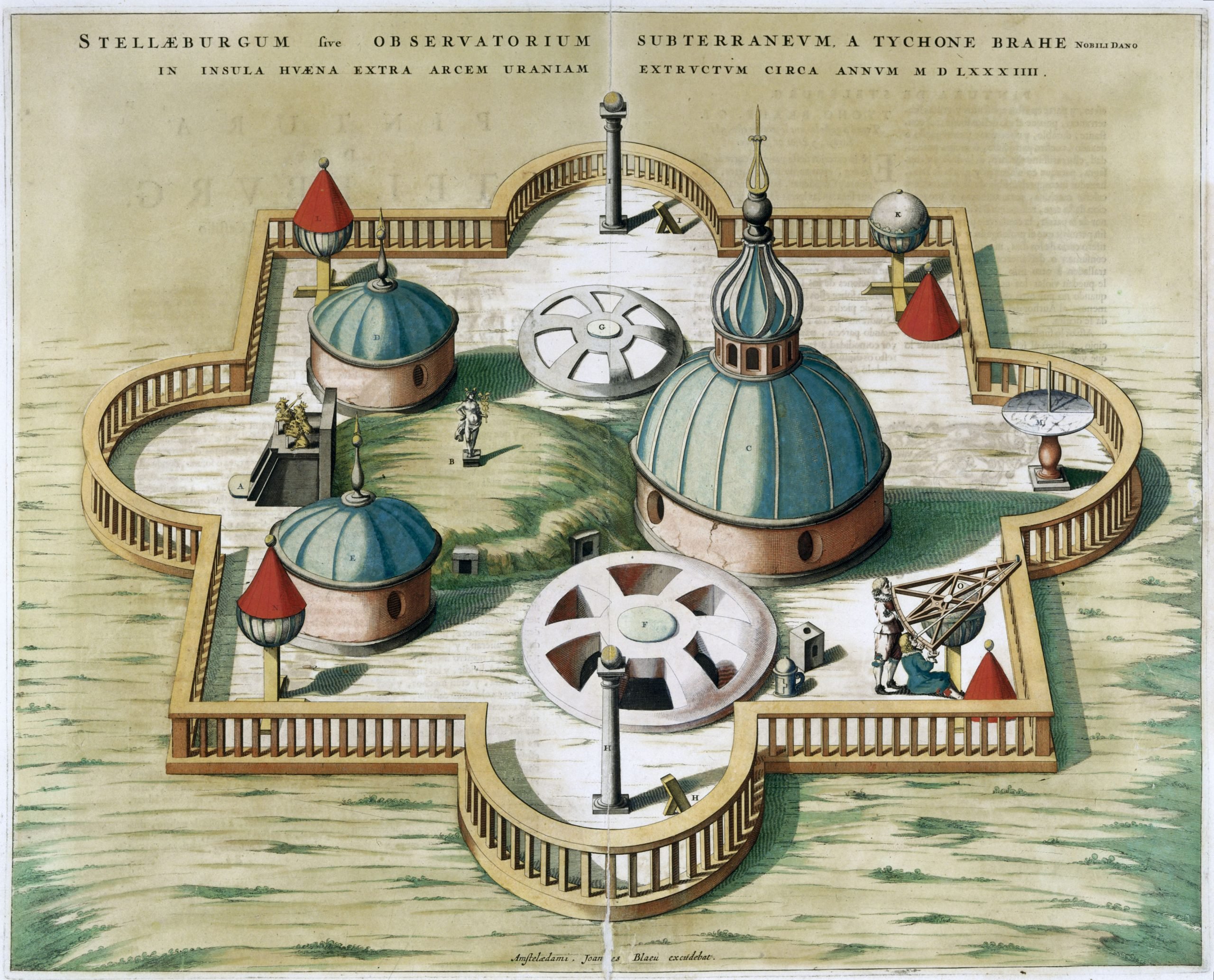
Researchers performing chemical analyses of pottery and glass shards recovered from the laboratory of Danish astronomer and alchemist Tycho Brahe, have found concentrations of nickel, copper, mercury, lead, gold, and tungsten—an element not described until 180 years after Brahe’s death.
Born in 1546 in Sweden, Brahe is best known for discovering a supernova in the Cassiopia formation and irregularities in the Moon’s orbit—all before the invention of the telescope in 1608. An alchemist following in the footsteps of the great German physician Paracelsus, he melted and mixed rare metals in the hope of developing cures for various Medieval illnesses.
His plague remedy, allegedly administered to Emperor Rudolph II, contained more than 60 ingredients, including opium, iron vitriol, and snake flesh. It’s one of a small number of alchemical recipes that survived, as alchemists—in the fashion of inventors and craftsmen of the time—kept their work a closely guarded secret.
Engraving of Tycho Brahe after an unknown artist. Photo: Universal History Archive/Getty Images.
In lieu of written sources, historians have turned to archaeology and chemistry to reconstruct Brahe’s work. While his laboratory in Uraniborg, Sweden, was demolished shortly after his passing in 1601, excavations during the late 1980s found shards of pottery, glass, and other objects the Danish alchemist used to make his miracle cures.
A chemical analysis of the objects, conducted in 2024 by University of Southern Denmark professor Kaare Lund Rassmussen and National Museum of Denmark curator Poul Grinder-Hansen, yielded both expected and unexpected results.
Predictably, the researchers found high concentrations of gold and mercury—rare and costly metals which, in Brahe’s time, were thought to possess healing powers. Other elements like nickel, zinc, and lead, which aren’t mentioned in any of Brahe’s writings or other accounts of his recipes, are likely byproducts of chemical reactions.
More surprising was the presence of tungsten, an element that occurs naturally in certain minerals like scheelite, ferberite, and hübnerite, and which was first identified and described nearly two centuries after Brahe’s death by Swedish chemist Carl Wilhelm Scheele.
Rassmussen and Grinder-Hansen aren’t sure how tungsten ended up in Brahe’s laboratory. In their study, which was published in the scientific journal Heritage Science, they suggest the alchemist may have isolated tungsten without realizing it.
They also offer a less likely but nonetheless plausible explanation. While Scheele was the first person to recognize tungsten as a separate element, the substance may have been described in the early 1500s by the German mineralogist Georgius Agricola, whose diaries mention a strange byproduct that was created when smelting tin.
“Maybe Tycho Brahe had heard about this and thus knew of tungsten’s existence,” Rasmussen told Phys.org. “But this is not something we know or can say based on the analyses I have done. It is merely a possible theoretical explanation for why we find tungsten in the samples.”